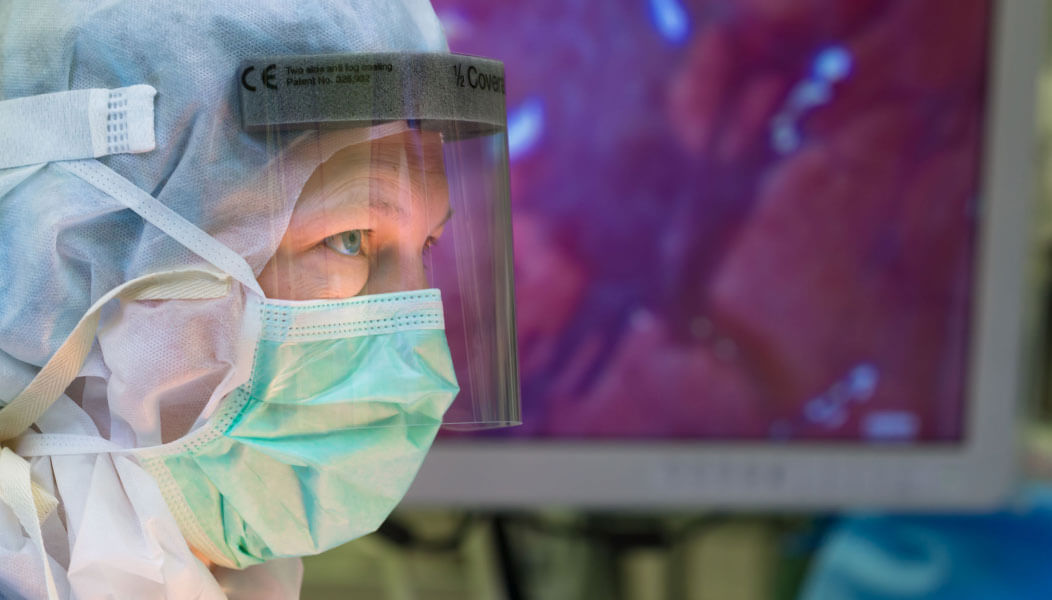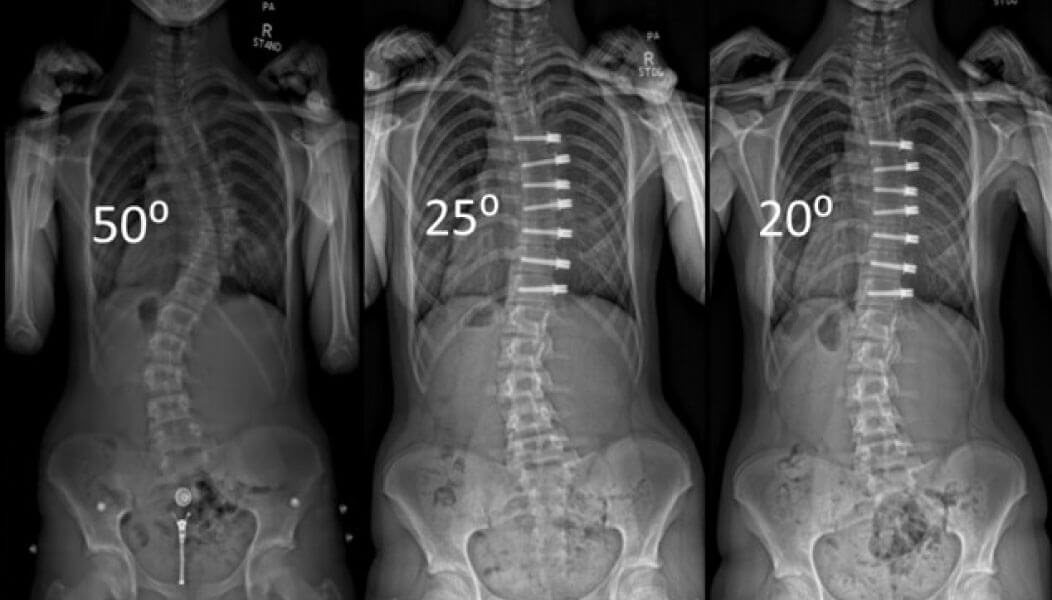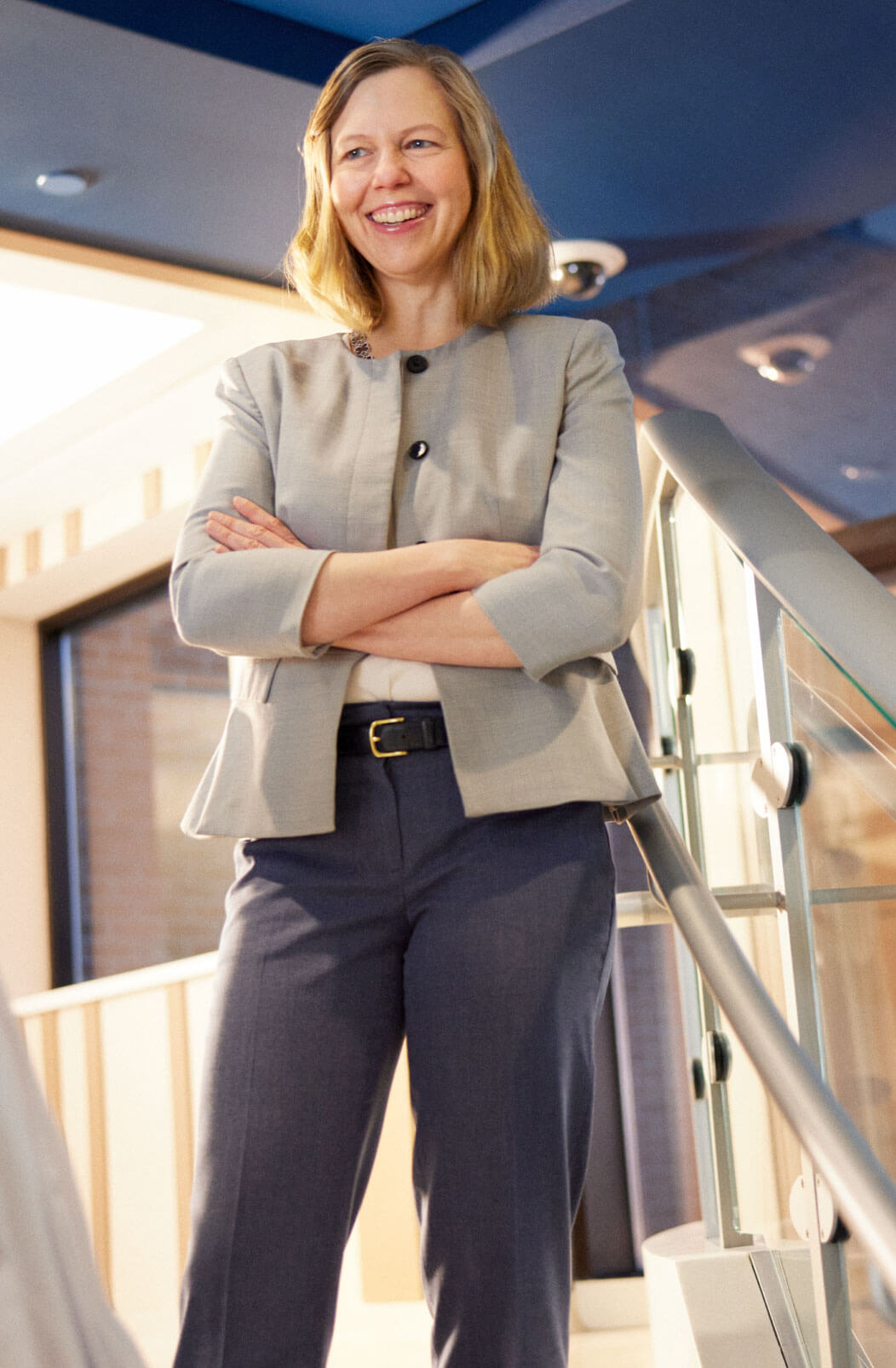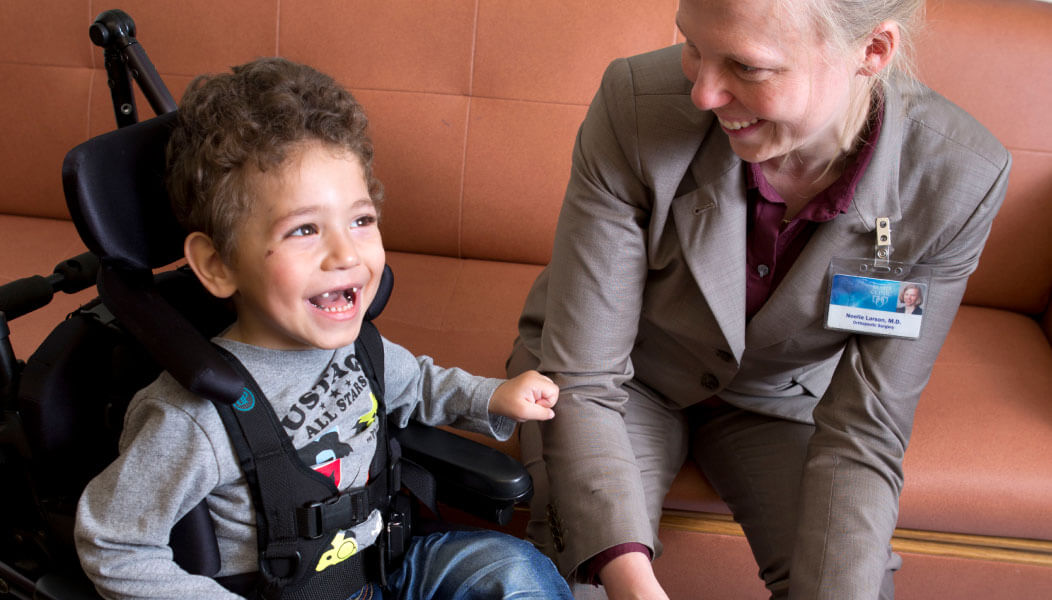“Coming into this field, I realized what we were doing in 2012 was similar to what we were doing in 1975,” she says. She knew a better way was possible. It was then she read about a promising procedure called vertebral body tethering. In 2015, Dr. Larson visited the few hospitals performing the procedure and brought the technique to Mayo Clinic. “We performed our first vertebral tethering procedure in 2015. At that point, it was so cutting-edge that the FDA had not yet approved it. We were taking screws and a cord used to fuse the back of the spine and actually putting them in the front part of the spine.”


Rather than one long incision in the back, vertebral body tethering involves making small incisions in the side, and instead of 20 screws and two rods, the surgeon uses one screw in each vertebra connected by a flexible cord, pulling the spine into a straighter position. Also, the spine isn’t locked down because it’s a plastic cord instead of rigid metal rods, allowing it to grow with the child. This approach offers much more freedom of movement and reduces recovery time. And as the child continues to grow, the spine may straighten even more. Dr. Larson adds, “It’s a much smaller procedure that preserves function.”
And preserving function is what drives Dr. Larson. “At the end of the day,” she says, “the question is, ‘what are we trying to achieve?’ From a surgical standpoint, we care a lot about the X-rays; how straight the spine is. But if it was my back and my life, maybe I don’t care so much what my X-ray looks like. Maybe I care more about how I feel, whether my back moves, and if I can return to the activities I enjoy, like dancing, tennis, gymnastics, or rock climbing. If these are my passions, maybe I’m willing to accept a little less correction to maintain that function.”

Every day surgeons go to work and make a hundred life-changing decisions. This can develop a rather black-and-white personality. I still see the world in a lot of gray.”
Dr. Larson takes the time to have an in-depth conversation with each patient and family to ensure she addresses their needs, concerns, and fears. “Every day surgeons go to work and make a hundred life-changing decisions. This can develop a rather black-and-white personality. I still see the world in a lot of gray,” she says. “My patients often ask me, ‘Dr. Larson, what would you do?’ And if they ask that, I’ll tell them. I’m all for honesty and transparency. I try to lay out every single treatment option and let them make the best decision for them.”

Mayo Clinic is synonymous with cutting-edge innovative treatments. But empathy is at the center of being a physician at Mayo Clinic. “In 2018, I attended a scoliosis support group convention. I spent the weekend with over a hundred parents and their daughters, listening to their experiences as scoliosis patients. It truly changed the way I interact with patients in clinic, every single day. Part of our role as physicians is to have empathy. To spend time thinking about what it’s like to walk in the patient’s shoes and wear a scoliosis brace. Or to have to take medications or get a special excuse to be pulled out of a gym class. I try to imagine what that feels like. And how do we make that experience better?” she says.
Dr. Larson says becoming a pediatric orthopedist is truly a calling. “Once I had done my rotation in it, I knew that this is what I needed to do. When I face adversity or a challenge, it’s so much less than what other people are going through. Seeing a child in clinic who will soon be an adult and hopefully go out into the world and maybe someday teach my children or be my doctor? It’s truly an honor,” she says.
If we’re doing the same thing in 10 years we’ve failed. Because we know there are better ways to care for children.”
As for the future, Dr. Larson has high expectations. In addition to vertebral tethering, she is studying the manipulation of the growth plate. “A lot of these conditions start with growth plate problems that cause the spine to deform. If we figure out how to fix the growth plate in the spine, we could correct a lot of these problems without needing screws and plates and metal,” she says. “If we’re doing the same thing in 10 years we’ve failed. Because we know there are better ways to care for children.”
And when looking to the future, Dr. Larson is not hesitant to veer off the beaten path, “I’m not afraid to be wrong,” she says. “I’m able to ask why are we treating patients in this way? Why aren’t there other promising treatment options out there?” Because Dr. Larson knows the path forward isn’t always just a relentless search for answers. Sometimes the greatest leaps come by simply asking better questions.